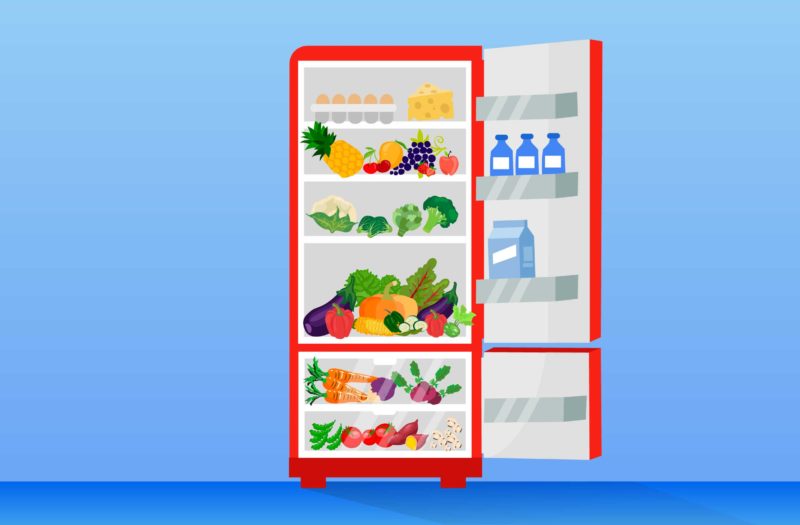Learn more about our FREE COVID-19 Patient Support Program for chronic illness patients and their loved ones.
This has been reviewed and updated as of May 23, 2020.
Anyone who eats runny eggs, doesn’t bother washing fresh fruit, or leaves leftovers on the counter for hours before polishing them off is gambling with their health to a certain extent. For many people, it’s a relatively low-risk proposition (though no one enjoys the vomiting and diarrhea that might ensue from a foodborne bug).
But if you’re immunocompromised, however, the equation changes. Your odds of developing foodborne illness can be higher, because your body is less likely to successfully fight off pathogens in contaminated foods. You’re also more apt to develop dangerous complications, like severe dehydration.
If you’re immunocompromised because you are undergoing chemotherapy or are an organ transplant recipient, food safety should be a top priority year-round. Food safety is also important if you are an autoimmune patient whose immune system may affected by your chronic condition or the medications you take to treat it.
But now that we’re in the midst of a COVID-19 pandemic, new questions about how to safely obtain, prepare, and consume food are arising. Here are some key facts you should know.
1. You probably won’t get COVID-19 from eating contaminated food, but it’s smart to take some precautions
While some viruses, like rotavirus and norovirus, may be spread via certain types of food, so far there is no evidence at this time that COVID-19 is being passed from one person to another through food. “Food has not been found to be a transmission vector,” says Tamika Sims, PhD, director of food technology communications at the International Food Information Council.
There is no evidence that people are contracting the coronavirus from touching food packaging (and then touching their face/mouth), either, according to recent information from the U.S. Food and Drug Administration (FDA). “If you wish, you can wipe down product packaging and allow it to air dry, as an extra precaution,” the agency adds.
That said, this coronavirus does appears to be able to survive on some surfaces for hours or even days. For that reason, it is a good idea to regularly disinfect commonly touched kitchen surfaces like countertops and the refrigerator, microwave, and oven door handles.
The FDA recommends cleaning kitchen surfaces (not food!) with a disinfectant solution (or make your own by adding 5 tablespoons of bleach to 1 gallon of water).
It is also theoretically possible (though it hasn’t been proven) that you could get coronavirus from eating raw fruits and vegetables that were contaminated by someone who has the virus. “If you’re using fresh produce, wash it thoroughly,” Dr. Sims advises. That includes anything with a skin you don’t eat (like bananas and melons).
2. Hot foods are safer than cold/room temperature ones
Heat destroys COVID-19, so cooking foods thoroughly and reheating takeout and leftovers should offer some additional protection. The French Agency for Food, Environmental, and Occupational Health & Safety has reported that heating food to 145°F for at least four minutes should do the trick.
To kill a variety of harmful germs, the U.S. Department of Health & Human Services always recommends cooking foods like steak, fish, and pork until they reach the appropriate internal temperature; poultry and leftovers should get even hotter (165°F).
3. Getting food delivered is safer than eating in restaurants
There is still some risk involved, since you’re trusting someone else to prepare your food and use safe handling practices, just as you would be if you ate in a restaurant, notes Dr. Sims. “However, having food delivered does minimize person-to-person contact, which is helpful for decreasing the transfer of germs.” If you decide to order in, move the food out of takeout containers and onto your own plates, discard the packaging it came in, and wash your hands thoroughly before digging in.
4. If possible, get groceries delivered rather than venturing into stores.
The most common way people get COVID-19 is through close contact with others who are infected. “Going into a crowded grocery store may not be the best idea if you are at a higher risk for coronavirus complications because you could come into close contact with a person who could be sick,” says Dr. Sims.
The safest way to get groceries is to have them delivered to your home or use a curbside pickup option at a store. If those aren’t options for you, see if you can get a friend or family member who is not high risk to shop for you. Throw out boxes and bags that your groceries arrive in, then wash your hands before putting food away and clean your countertops thoroughly afterward.
Wear a mask or other face covering and wipe down your cart or basket with a disinfectant wipe before you start shopping. Try to stay at least six feet from other shoppers and don’t touch your face. Use hand sanitizer as soon as you leave the store, and wash your hands thoroughly when you get home.
Get Free Coronavirus Support for Chronic Illness Patients
Join the Global Healthy Living Foundation’s free COVID-19 Support Program for chronic illness patients and their families. We will be providing updated information, community support, and other resources tailored specifically to your health and safety. Join now.
COVID-19 cannot be transmitted by either farm animals or domestic animals. French Agency for Food, Environmental and Occupational Health & Safety. https://www.anses.fr/en/content/covid-19-cannot-be-transmitted-either-farm-animals-or-domestic-animals-0.
Food poisoning. Mayo Clinic. https://www.mayoclinic.org/diseases-conditions/food-poisoning/symptoms-causes/syc-20356230.
Food safety, nutrition, and wellness during COVID-19. Harvard T.H. Chan School of Public Health. https://www.hsph.harvard.edu/nutritionsource/2020/03/25/food-safety-nutrition-and-wellness-during-covid-19.
People at Risk: Those with Weakened Immune Systems. FoodSafety.gov. https://www.foodsafety.gov/people-at-risk/people-with-weakened-immune-systems.
Safe Minimum Cooking Temperatures Charts. FoodSafety.gov. https://www.foodsafety.gov/food-safety-charts/safe-minimum-cooking-temperature.
Shopping for Food During the COVID-19 Pandemic – Information for Consumers. U.S. Food & Drug Administration. May 1, 2020. https://www.fda.gov/food/food-safety-during-emergencies/shopping-food-during-covid-19-pandemic-information-consumers.






